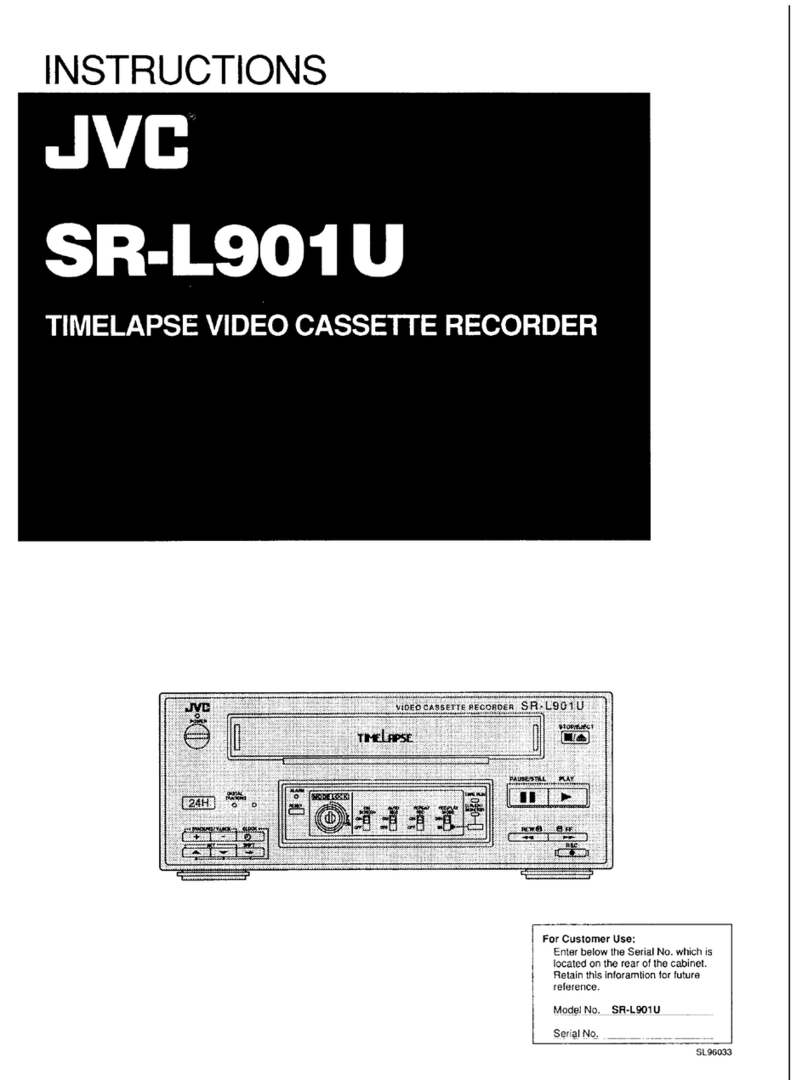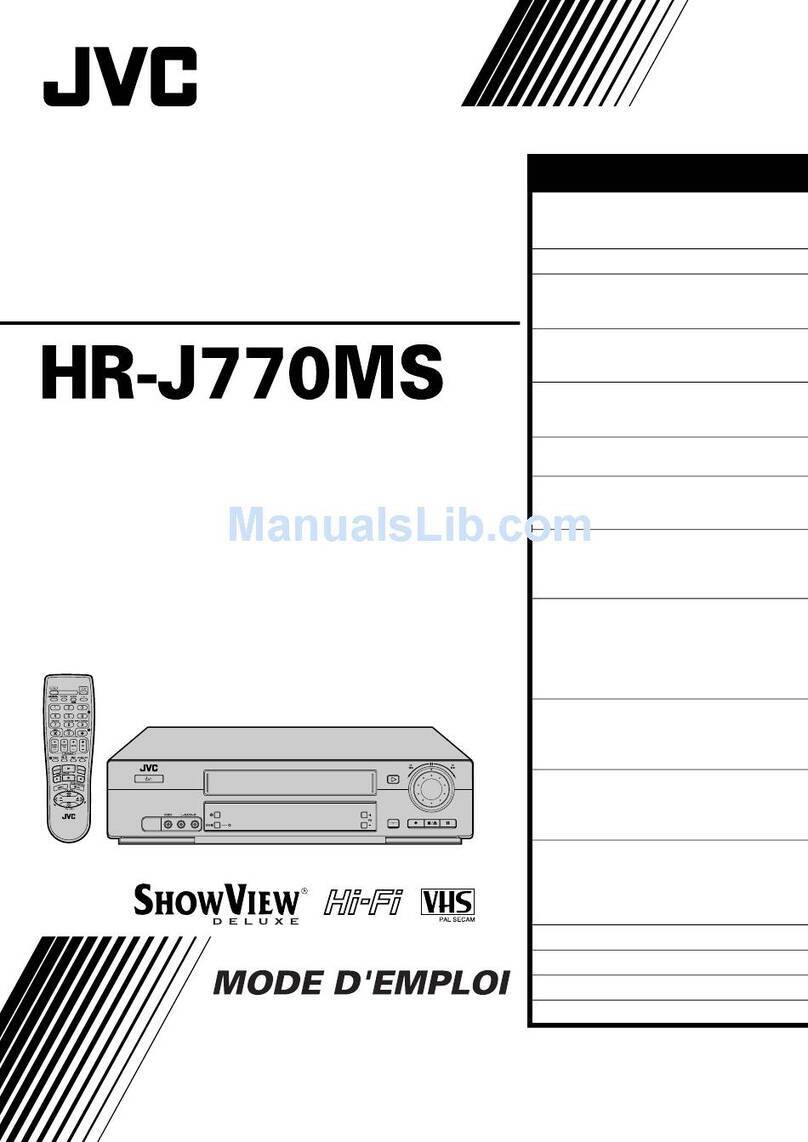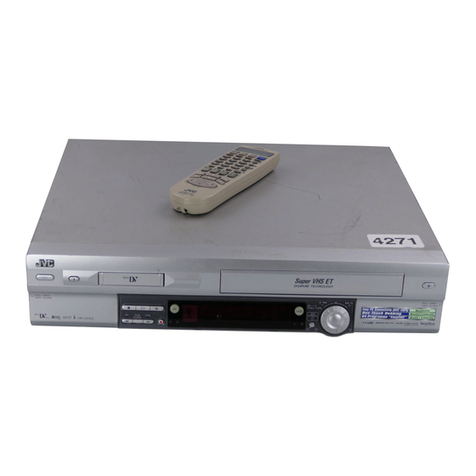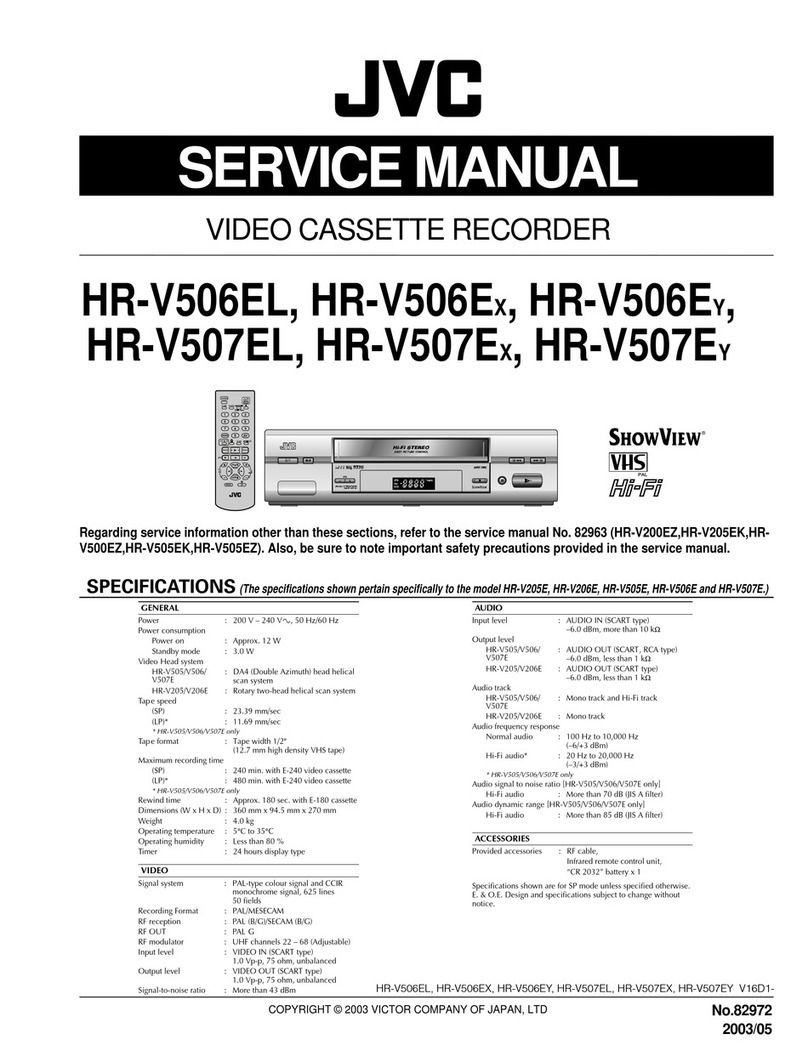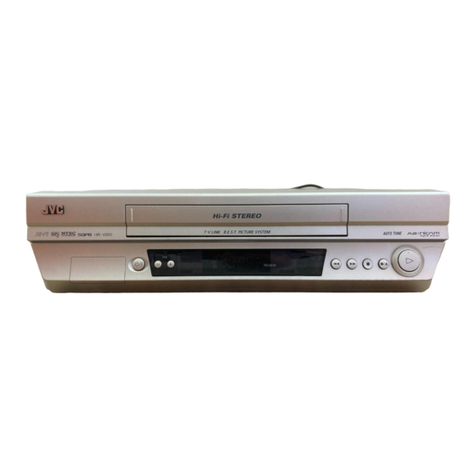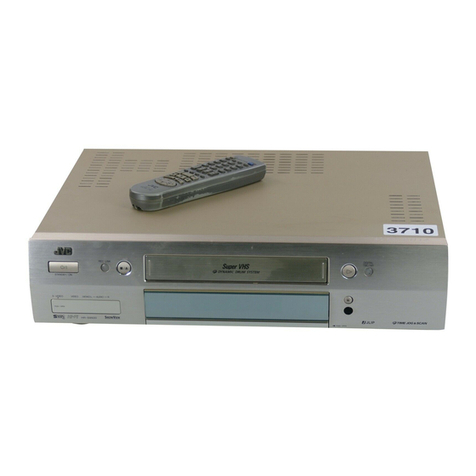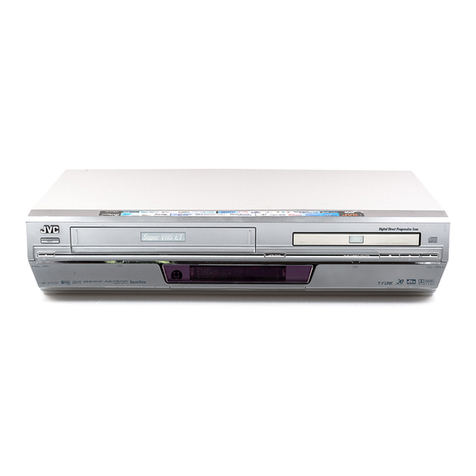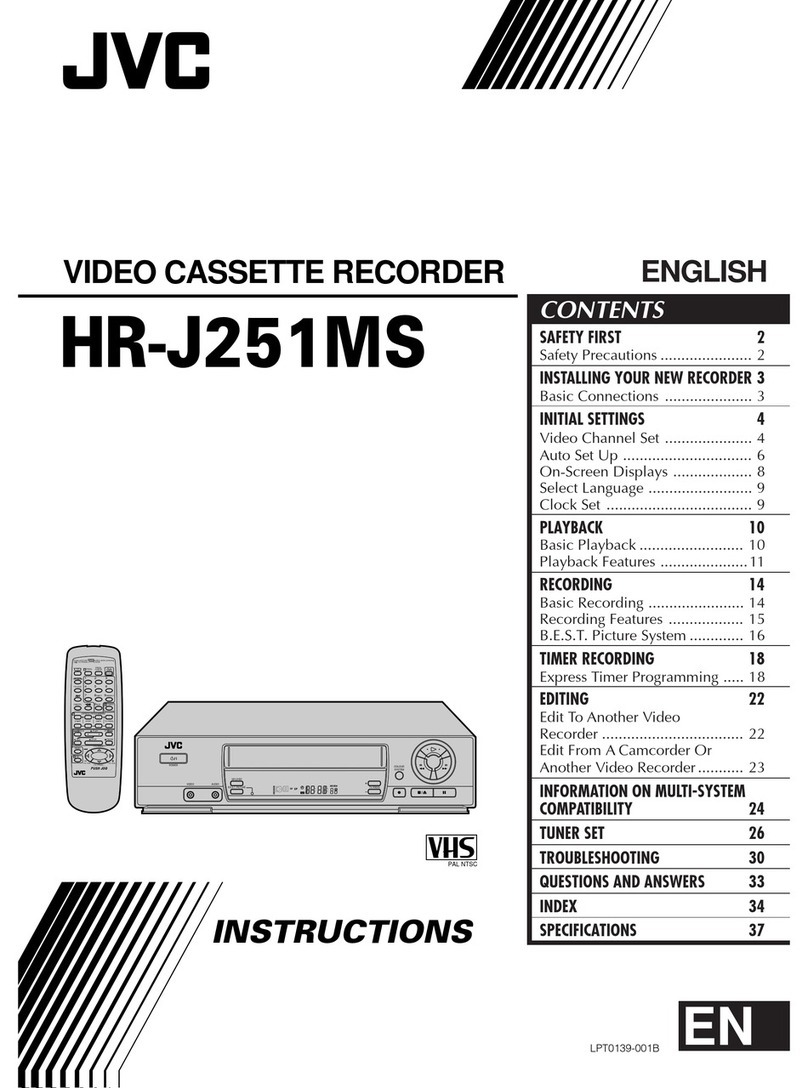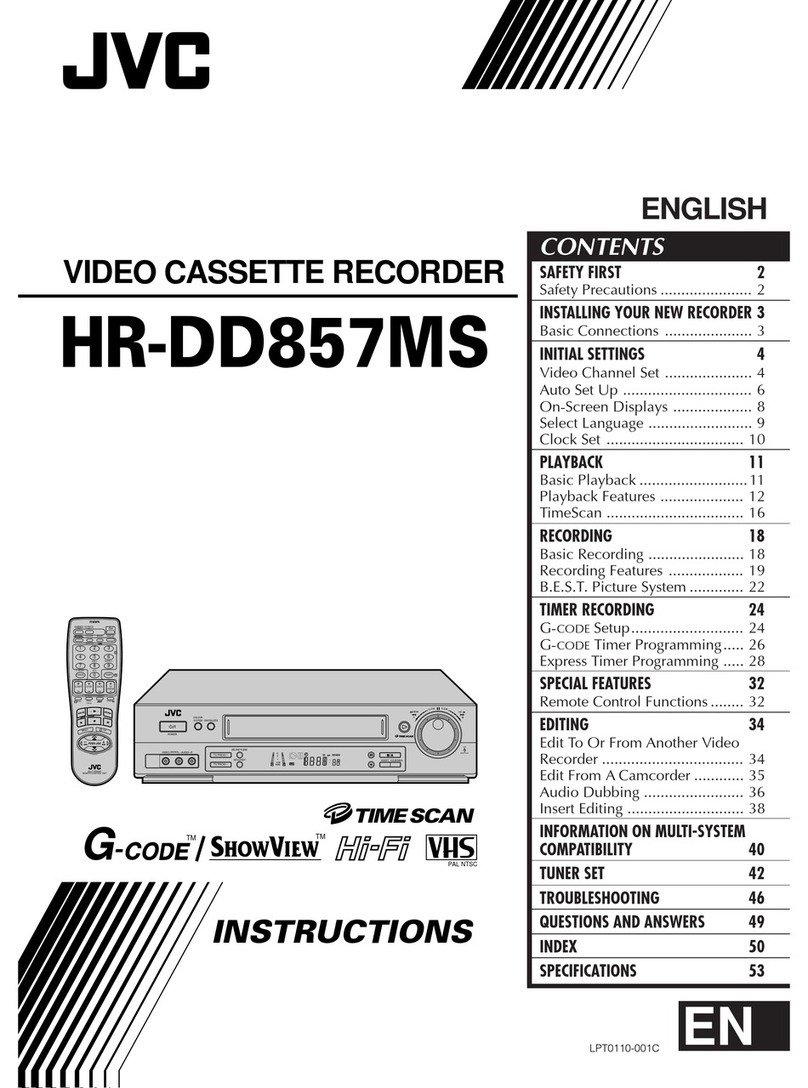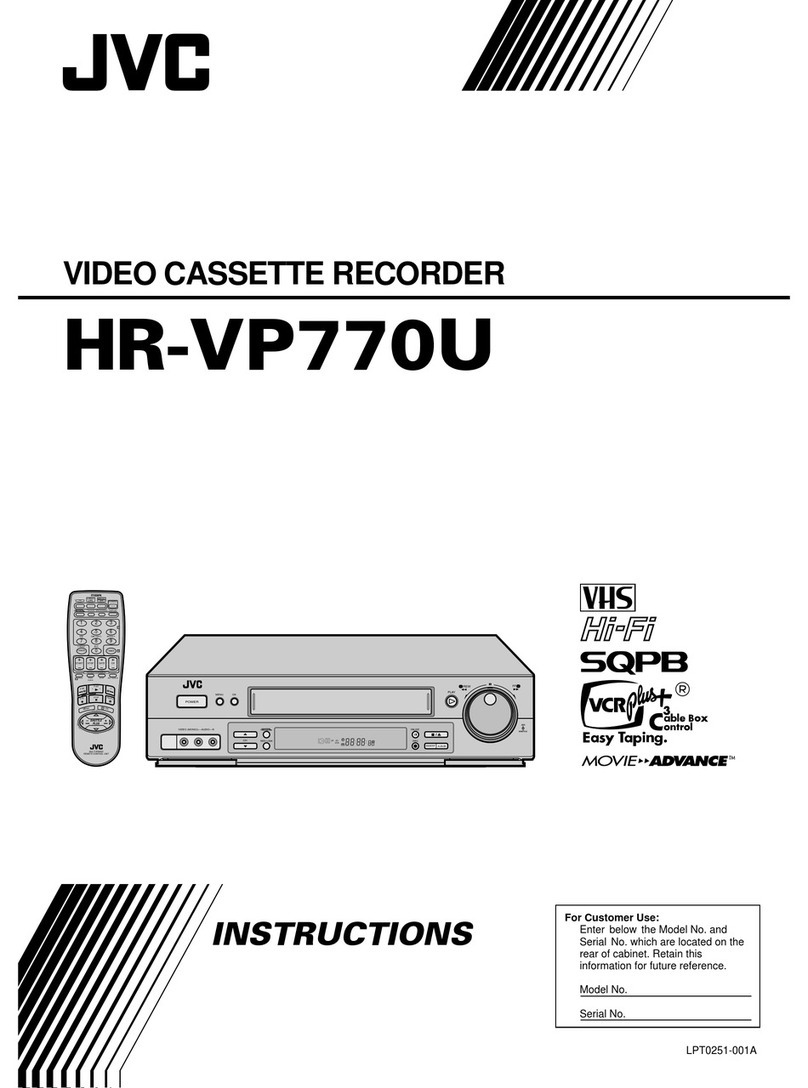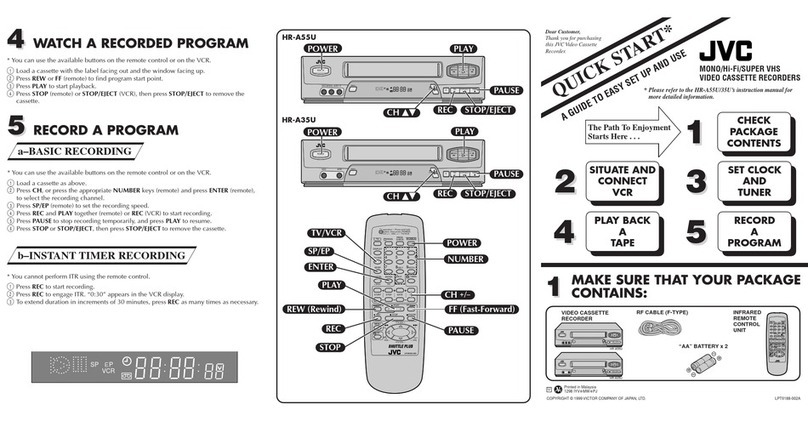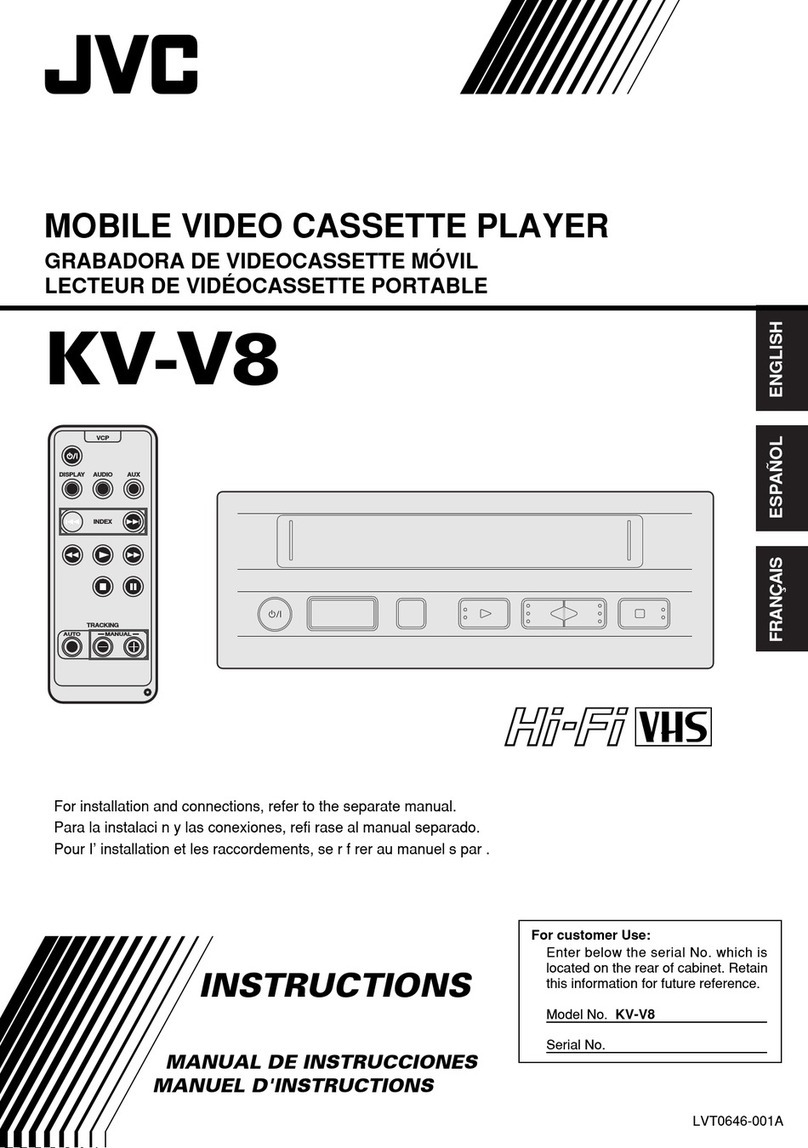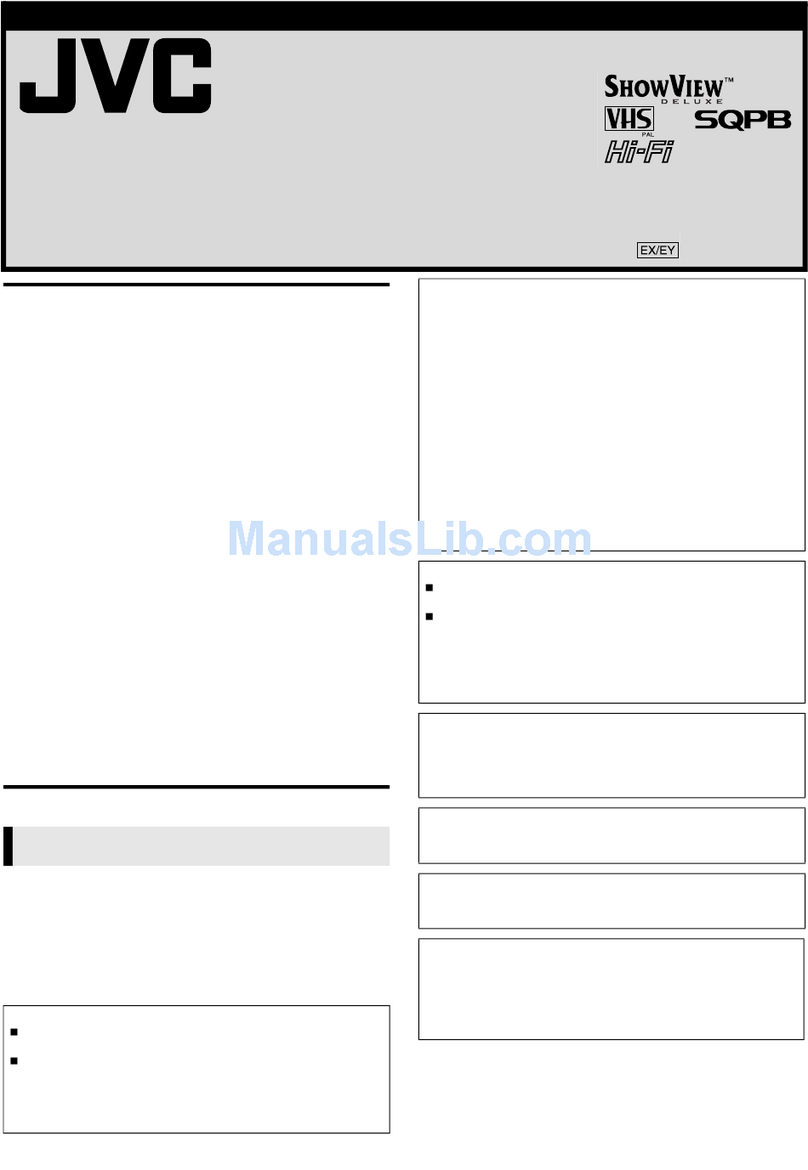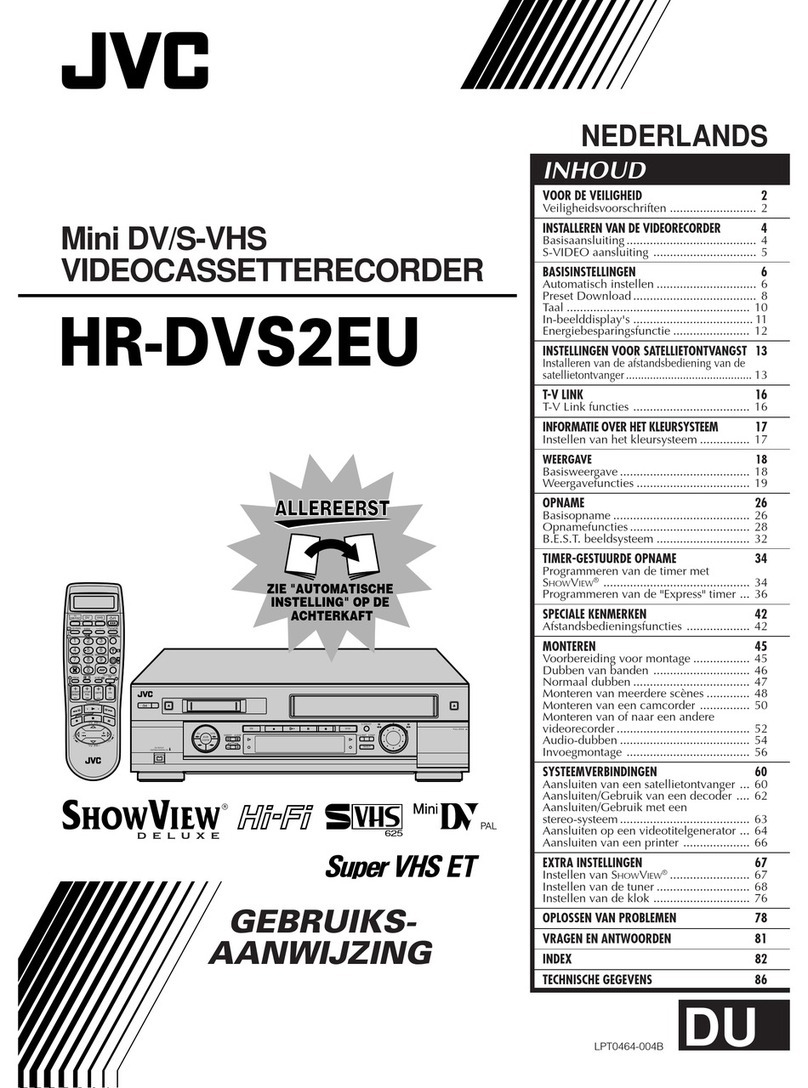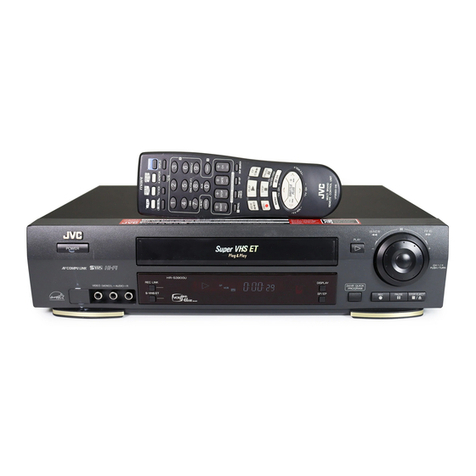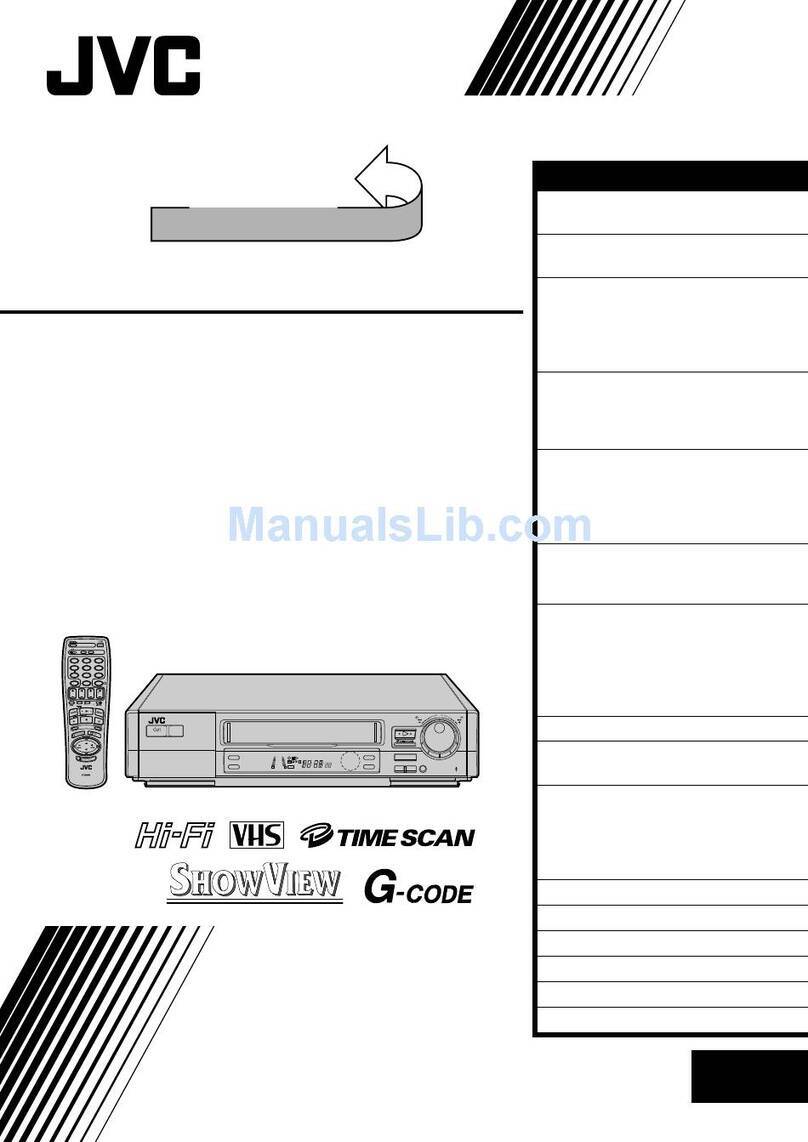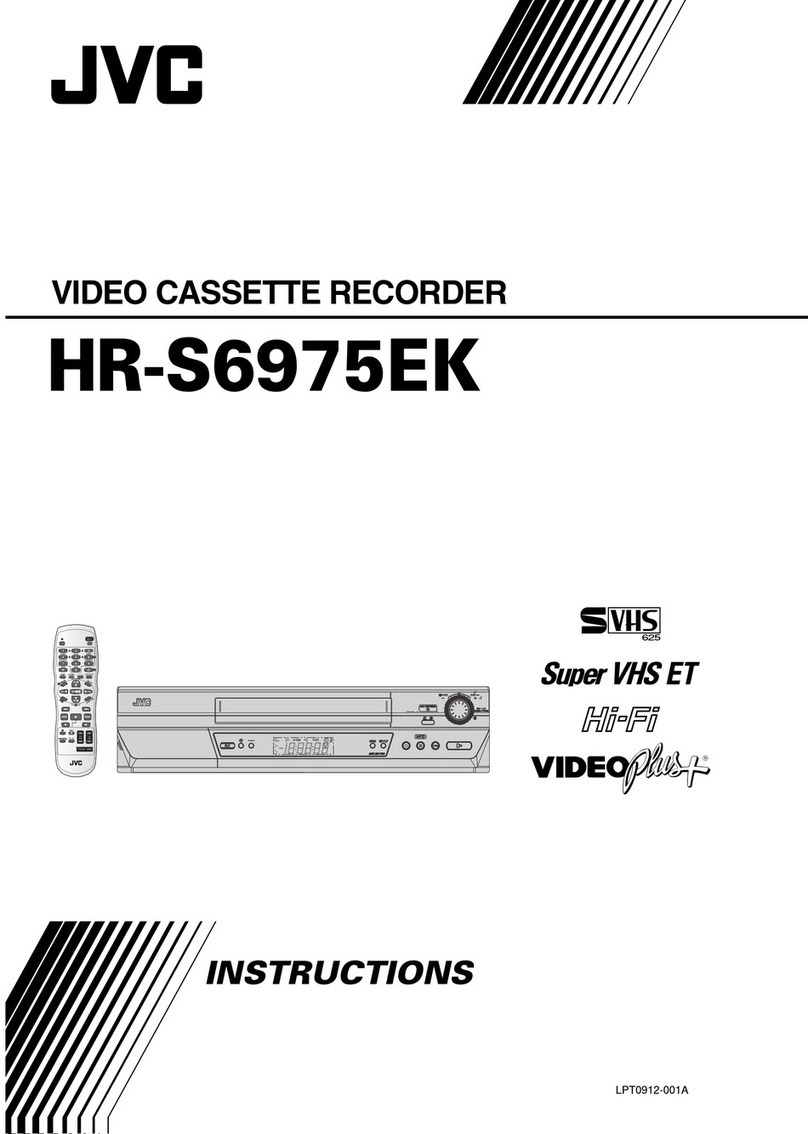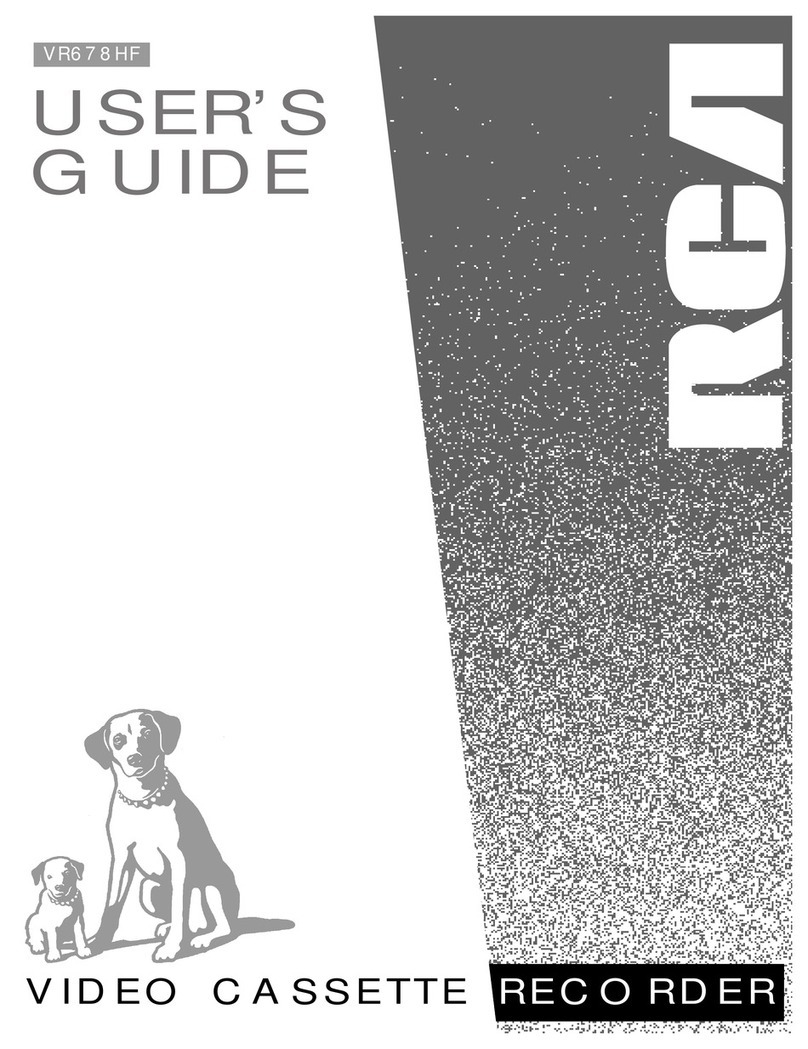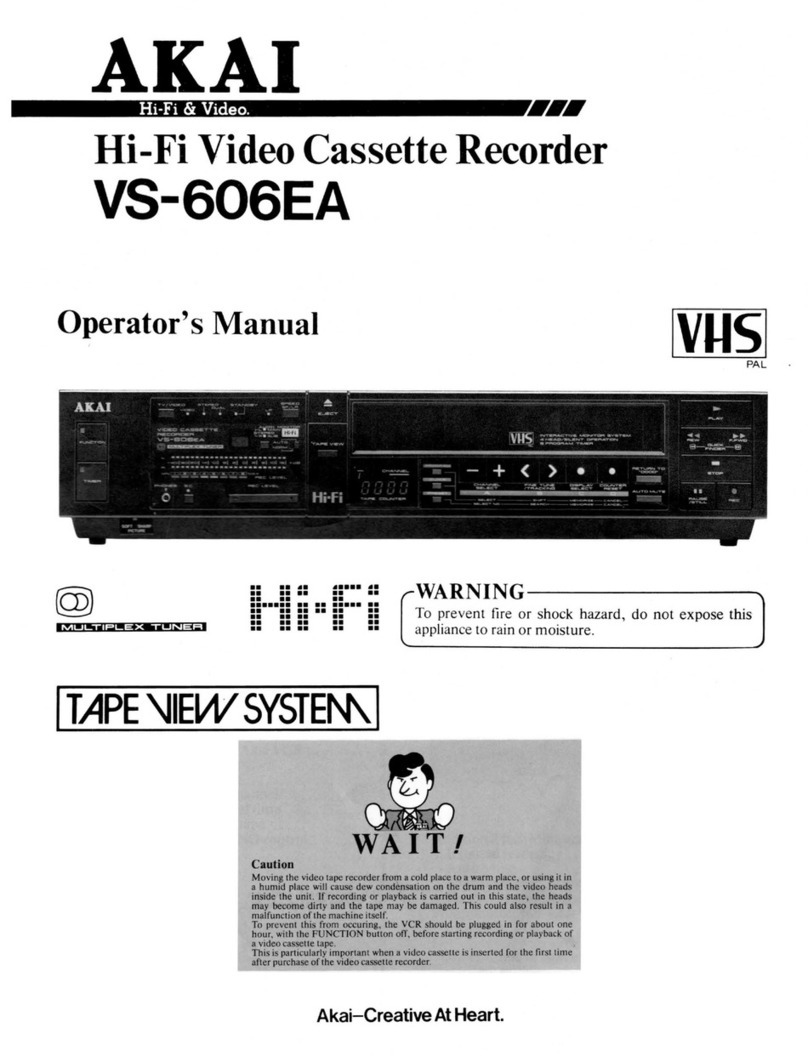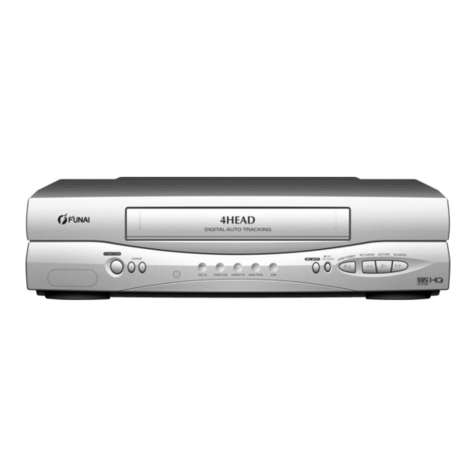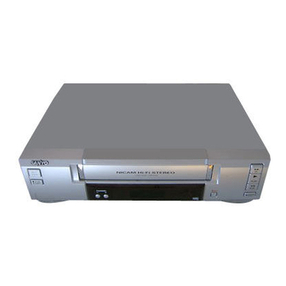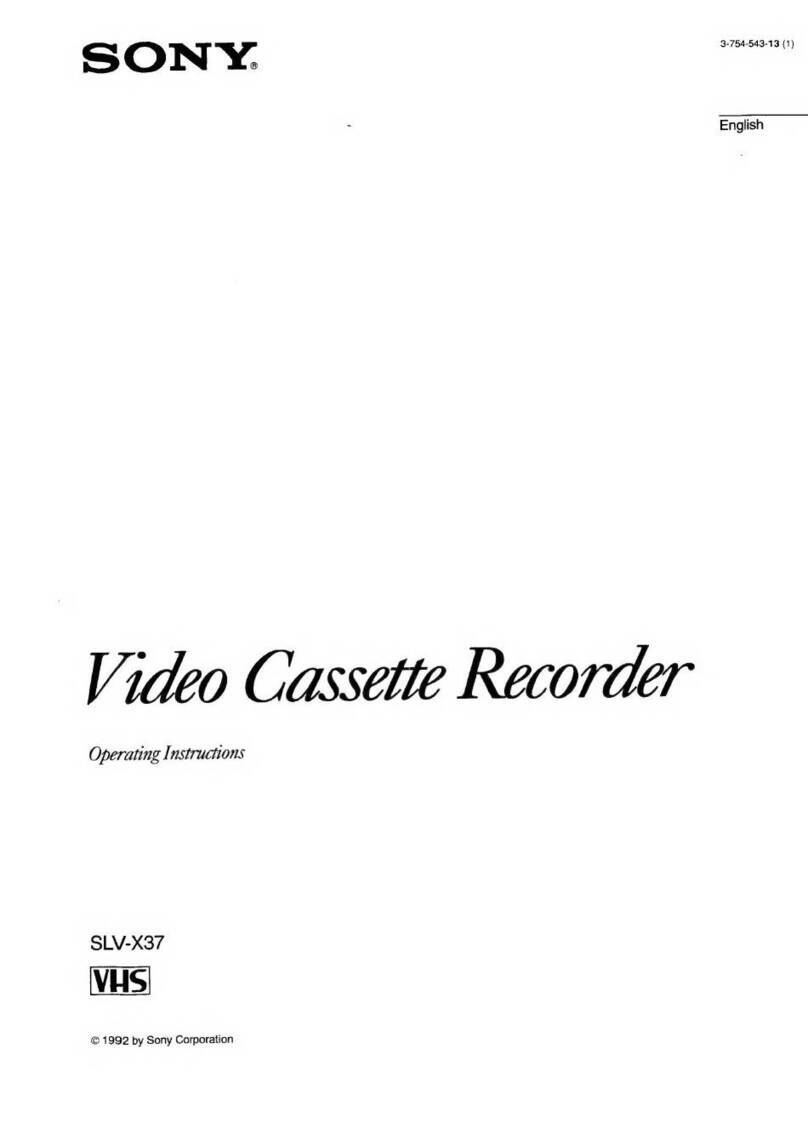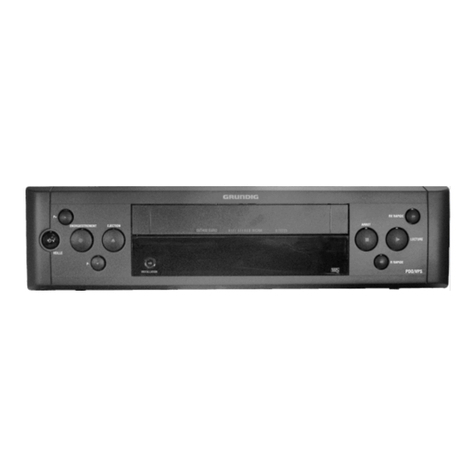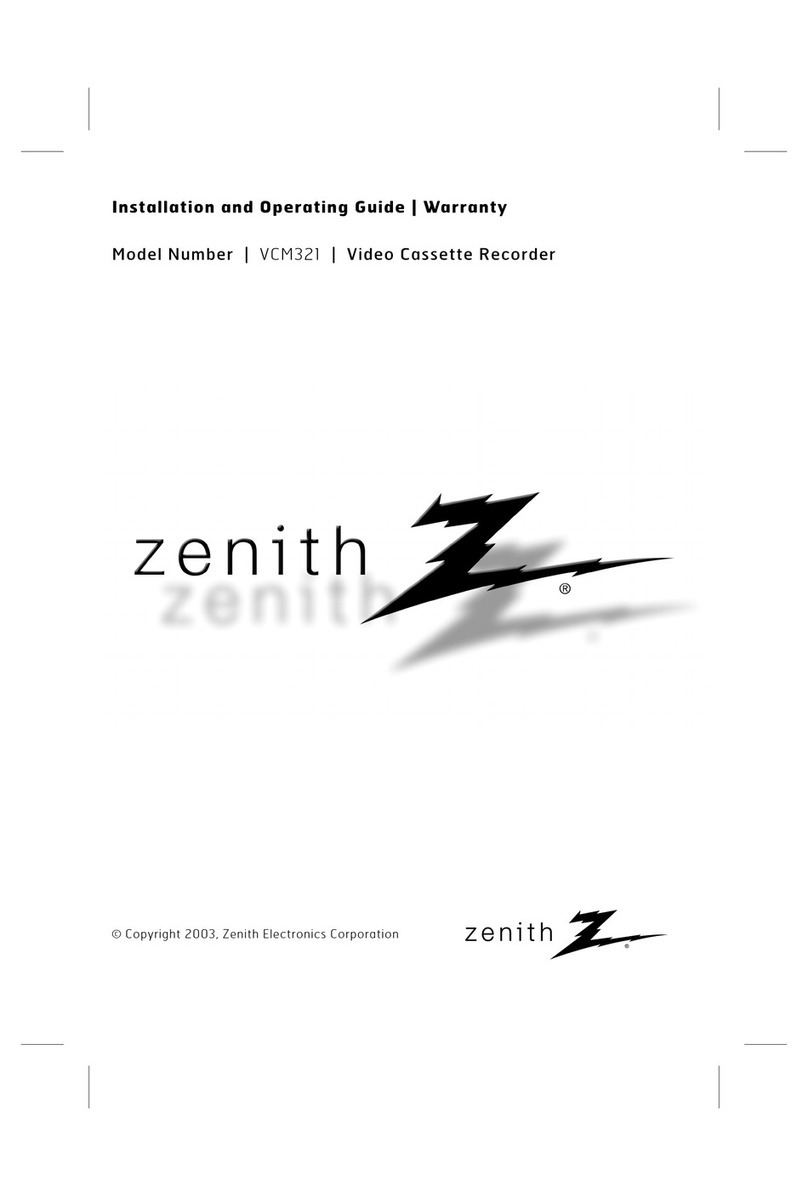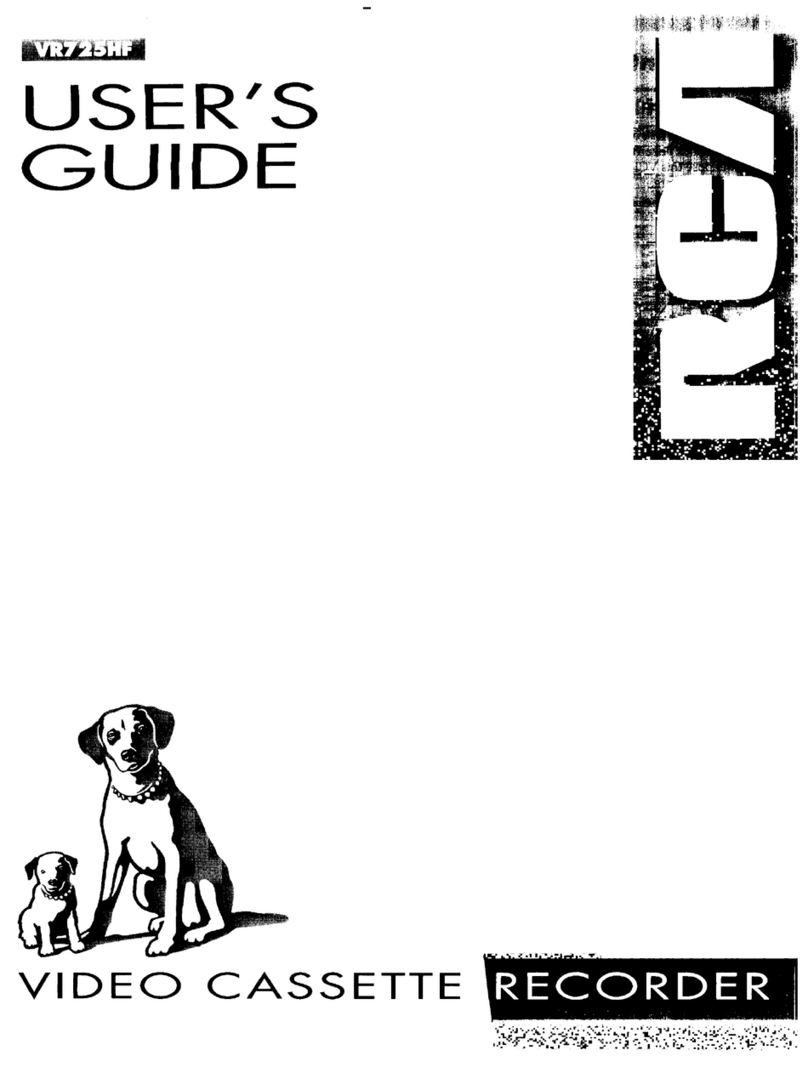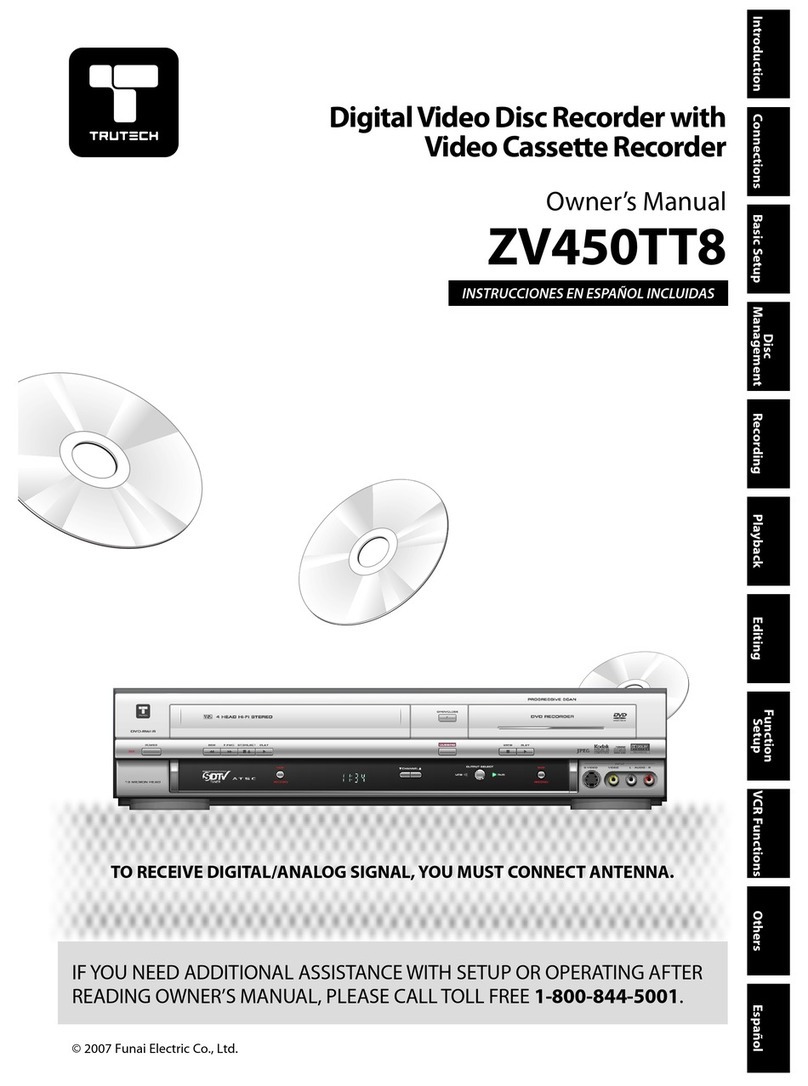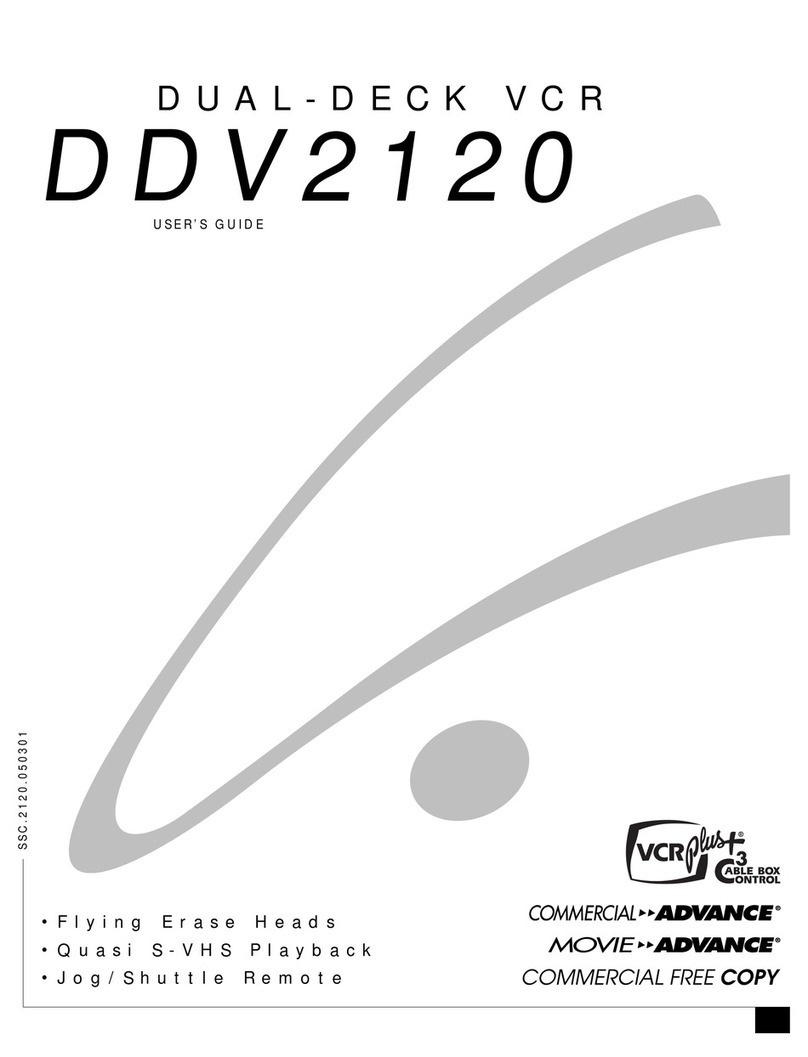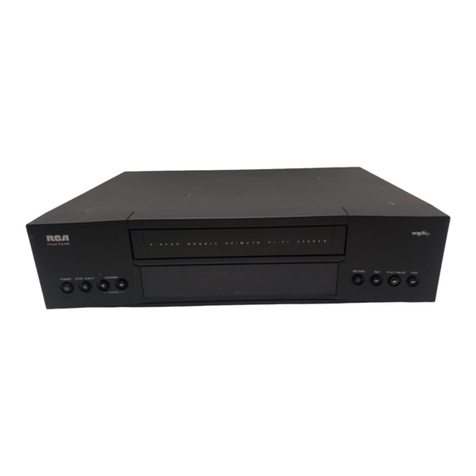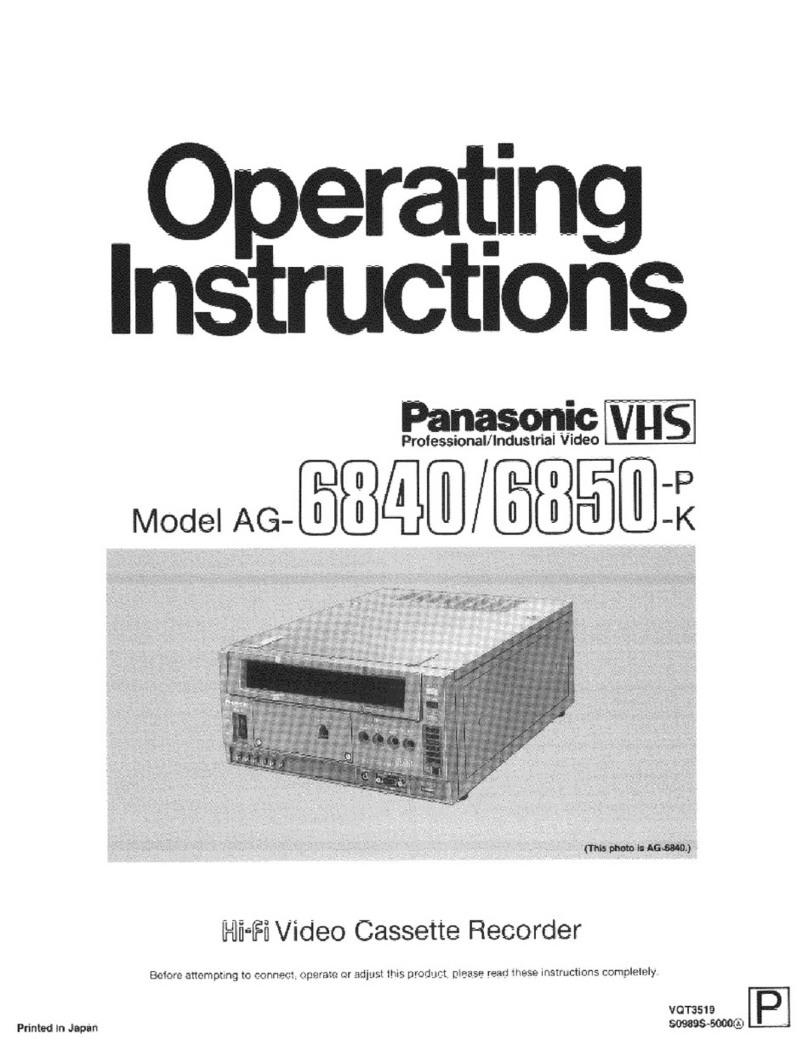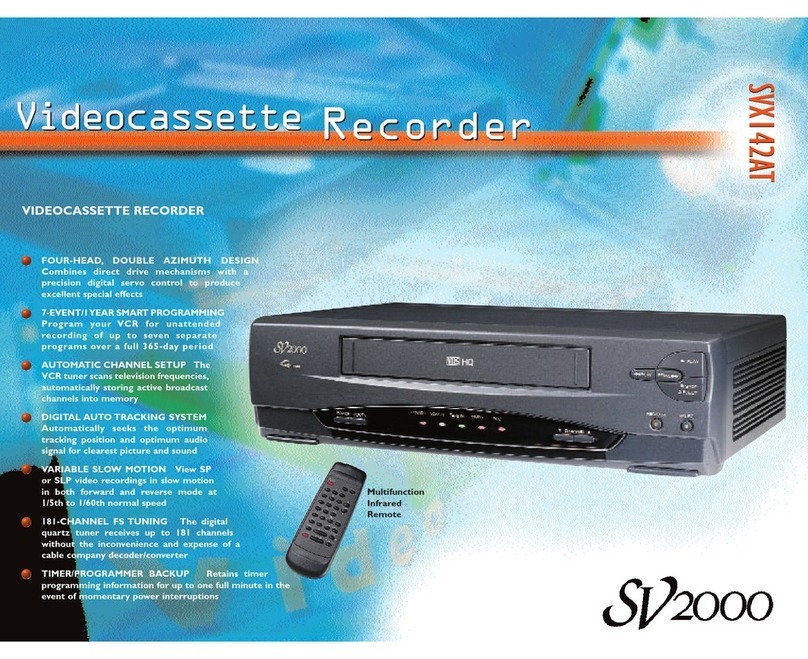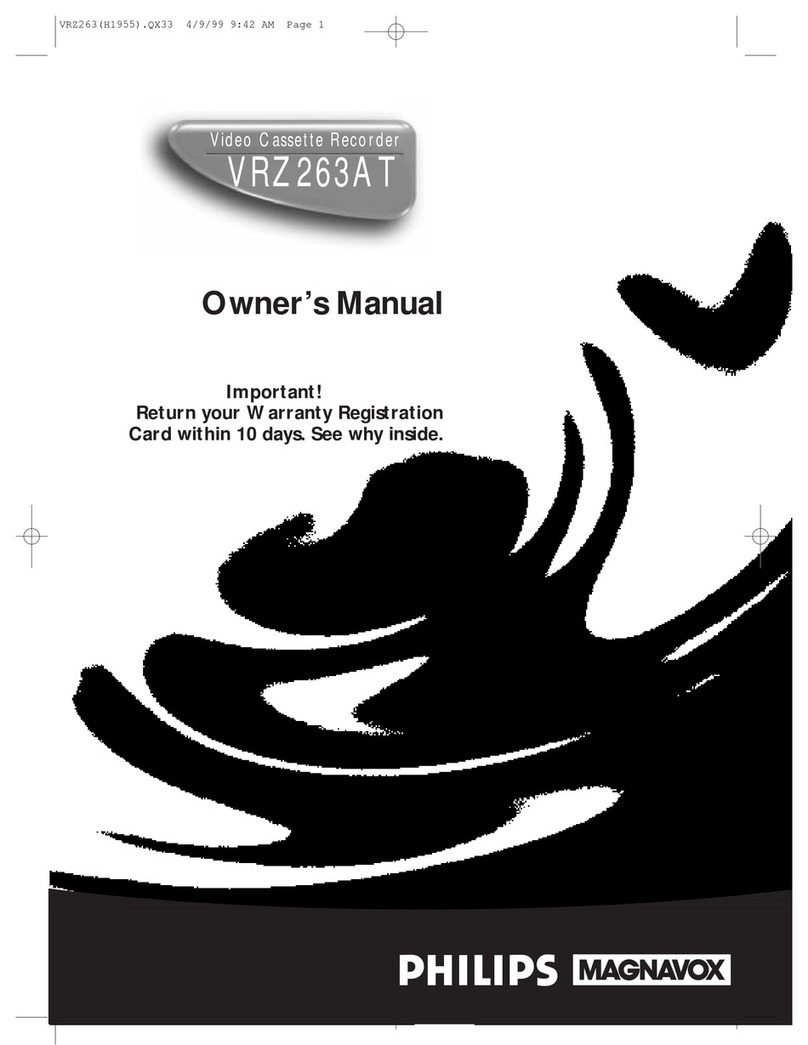
TABLE OF CONTENTS
Section Title Page Section Title Page
Important Safety Precautions
INSTRUCTIONS
DISASSEMBLY INSTRUCTIONS
1.
REMOVAL OF MECHANICAL PARTS AND P.C.BOARDS ...............
1-1
1-1 TOP CABINET AND FRONT CABINET ............................ 1-1
1-2 FLAP .................................................................................. 1-1
1-3 DECK CHASSIS ................................................................1-1
1-4 SYSCON PCB ...................................................................1-1
2. REMOVAL OF VCR DECK PARTS.........................................1-2
2-1 TOP BRACKET..................................................................1-2
2-2 CASSETTE HOLDER ASS’Y.............................................1-2
2-3 CASSETTE SIDE L/R ........................................................1-2
2-4 LINK UNIT .........................................................................1-2
2-5 LINK LEVER / FLAP LEVER / SENSOR COVER R..........1-2
2-6 LOADING MOTOR / WORM..............................................1-3
2-7 TENSION ASS’Y................................................................1-3
2-8 T BRAKE ARM / T BRAKE BAND......................................1-4
2-9
S REEL / T REEL / IDLERARMASS’Y / IDLER GEAR ..............
1-4
2-10
CASSETTE OPENER / PINCH ROLLER BLOCK / P5ARM ASS’Y.............
1-5
2-11 A/C HEAD ........................................................................1-5
2-12 FE HEAD .........................................................................1-5
2-13 CYLINDER UNITASS’Y ..................................................1-5
2-14 CAPSTAN DD UNIT.........................................................1-6
2-15
MAIN CAM / PINCH ROLLER CAM / JOINT GEAR ............
1-6
2-16 LOADING GEAR S/T UNIT..............................................1-6
2-17
CLUTCH ASS’Y / RING SPRING / CLUTCH LEVER / CLUTCH GEAR ...............
1-7
2-18
CASSETTE GUIDE POST / INCLINED BASE S/T UNIT / P4 CAP..............
1-7
KEY TO ABBREVIATIONS ........................................................1-8
PREVENTIVE CHECKS AND SERVICE INTERVALS.............1-10
CLEANING ...............................................................................1-10
SERVICE MODE LIST.............................................................. 1-11
WHEN “N” IS ALWAYS BEING DISPLAYED ON THE TV MONITOR ..
1-11
SERVICING FIXTURES AND TOOLS...................................... 1-11
MECHANISM ADJUSTMENT PARTS LOCATION GUIDE............
1-11
MECHANICAL ADJUSTMENT ................................................1-12
TAPE REMOVAL METHODAT NO POWER SUPPLY ..........1-12
1. CONFIRMATION AND ADJUSTMENT .................................1-12
1-1
CONFIRMATION AND ADJUSTMENT OF TENSION POST POSITION .
1-12
1-2 CONFIRMATION OF PLAYBACK TORQUE AND
BACK TENSION TORQUE DURING PLAYBACK...........1-12
1-3 CONFIRMATION OF VSR TORQUE...............................1-12
1-4 CONFIRMATION OF REEL BRAKE TORQUE................1-13
2. CONFIRMATION AND ADJUSTMENT OF TAPE
RUNNING MECHANISM .................................................. 1-13
2-1 GUIDE ROLLER ..............................................................1-13
2-2
CONFIRMATION AND ADJUSTMENT OF AUDIO/CONTROL HEAD .
1-14
2-3
TAPE RUNNING ADJUSTMENT(X-VALUE ADJUSTMENT) .
1-14
ELECTRICAL ADJUSTMENTS ...............................................1-15
1. BASIC ADJUSMENT ............................................................ 1-15
1-1 SWITCHING POINT ........................................................1-15
ELECTRICAL ADJUSTMENT PARTS LOCATION GUIDE ............
1-15
IC DESCRIPTIONS ..................................................................1-16
SERVO TIMING CHART ..........................................................1-19
MECHANISM TIMING CHART.................................................1-20
TROUBLE SHOOTING GUIDE ................................................1-21
POWER DOES NOT TURN ON ............................................1-21
POWER SHUTS OFF ............................................................1-22
AUDIO SHAKES ....................................................................1-23
CASSETTE TAPE IS NOTACCEPTED.................................1-24
FF/REW DO NOT WORK ......................................................1-25
WHEN INSERTING CASSETTE, IT EJECTS IMMEDIATELY..
1-25
TAPE LOADING IS OK, BUT UNLOADS IMMEDIATELY......1-26
PLAYBACK PICTURE JITTERS HORIZONTALLY ................1-27
PLAYBACK PICTURE SHAKES ............................................1-27
AUTO TRACKING DOES NOT OPERATE ............................1-28
WHEN PLAYBACK, FAST FORWARD OR REWIND MODE IS ACTIVATED, UNIT STOPS IMMEDIATELY ..
1-28
PLAYBACK PICTURE JITTERS VERTICALLY .....................1-29
NO PLAYBACK PICTURE .....................................................1-30
NO PICTURE DURING PLAYBACK ......................................1-31
NO COLOR DURING SELF RECORDING AND PLAYBACK.
1-31
CYLINDER NOT ROTATING DURING PLAYBACK AND RECORDING ..
1-32
PLAYBACK PICTURE NOISY(EVEN AFTER CLEANING HEADS) .
1-32
NO NORMALAUDIO ON PLAYBACK ...................................1-33
CAPSTAN DD MOTOR NOT ROTATING ..............................1-34
AUDIO CAN NOT BE RECORDED .......................................1-35
CASSETTE IN AND DOWN, UNIT HAS NO FUNCTIONS....1-36
RECORDING MECHANISM WORKS, BUTNO VIDEO RECORDED FROM INPUTJACK OR TUNER ..
1-37
NO E-E (NO VIDEO FROM TUNER).....................................1-38
NO E-E AUDIO (MONO) ........................................................1-39
NO TUNER AUDIO (MONO)..................................................1-40
CHARTS AND DIAGRAMS
INTERCONNECTION DIAGRAM ............................................2-1
Y/C/AUDIO/CCD/HEAD AMP SCHEMATIC DIAGRAM ..........2-3
SYSTEM CONTROL/SERVO SCHEMATIC DIAGRAM ..........2-5
POWER SCHEMATIC DIAGRAM ...........................................2-7
OPERATION/DISPLAY SCHEMATIC DIAGRAM....................2-9
TUNER SCHEMATIC DIAGRAM...........................................2-11
Hi-Fi/DEMODULATOR SCHEMATIC DIAGRAM...................2-13
PRINTED CIRCUIT BOARDS SYSCON/BOT .......................2-15
WAVEFORMS .......................................................................2-18
Y/C/AUDIO/CCD/HEAD AMP BLOCK DIAGRAM .................2-19
SYSTEM CONTROL/SERVO BLOCK DIAGRAM .................2-21
TUNER BLOCK DIAGRAM....................................................2-23
HI-FI/DEMODULATOR BLOCK DIAGRAM ...........................2-25
OPERATION BLOCK DIAGRAM ...........................................2-27
POWER BLOCK DIAGRAM ..................................................2-27
PARTS LIST
3.1 PACKING AND ACCESSORY ASSEMBLY<M1> ................ 3-1
3.2 FINAL ASSEMBLY<M2> ...................................................... 3-2
3.3 MECHANISM ASSEMBLY<M4> .......................................... 3-4
3.4 ELECTRICAL PARTS LIST.................................................. 3-7
SYSCON BOARD ASSEMBLY<03> ........................................ 3-7
BOT BOARD ASSEMBLY<07> ...............................................3-10
REFERENCE
SEMICONDUCTOR BASE CONNECTIONS.......................... 4-1
GENERAL SPECIFICATIONS[HR-A60UC] .............................4-2
